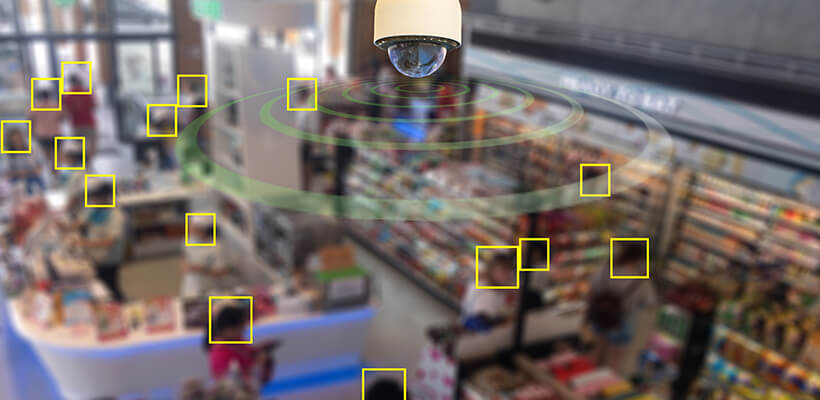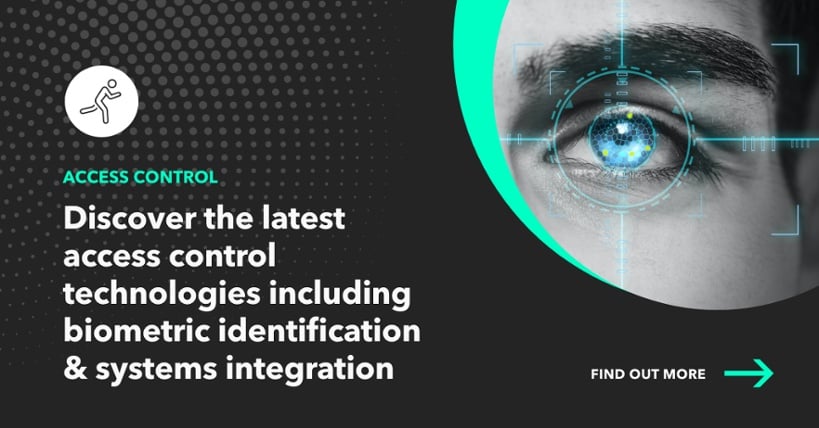People counting tech was once a tool only for retailers, used to monitor metrics like footfall and average visitor spend. Now, it’s an advanced technology at the heart of sophisticated occupancy management systems. It’s helping all kinds of companies function more safely and efficiently in the face of the ‘new normal’.
What is people counting technology?
People counting hardware now covers everything from basic infrared ‘beam breaking’ solutions to advanced occupancy sensors supporting mask detection and facial recognition. Integrated with building management software this hardware provides critical real-time data about space utilisation to power smarter workplaces.
People counting for smarter workspaces
For smarter building management, businesses need to know how many people are using their spaces at any given time. Tracking the movement of people within the workspace and anticipating bottlenecks, overcrowding and under-occupation is vital to these efforts. With the right software systems, access to this data can help redirect traffic to ease hazardous congestion, as well adjust the use of utilities to save money, or even trigger sanitization activity when spaces are free of people.
Right now, the tech is proving particularly important for supporting Covid compliance efforts. But it’s also promising a future of safer and more frictionless movement of people within offices beyond the end of the pandemic.
The evolution of people counting technology:
IR people counters
These were the first automated counting solutions. At the simplest end of the market are horizontal infrared beams positioned across entrances of rooms and buildings. These ‘people counters’ record each “break” of the beam as individuals cross an entrance. The counting mechanism is crude and cannot always discern between individuals, groups and objects.
Thermal Cameras
Thermal counters work by detecting people from their body heat profile. They are good at discerning individuals and are not reliant on light to work. Their accuracy can be as much as 96%. They can count bi-directionally even when a number of people are passing simultaneously.
CCTV
Adding people counting functionality to existing CCTV set ups can seem a good way of using existing assets. However, a security camera set up is not necessarily going to be in the right place to count people in the way needed to deliver accurate results.
Mono and Stereo overhead cameras
These type of systems are ceiling-mounted and use video to count entrances and exits into rooms and spaces throughout your building. As an optical solution they can detect individual bodies more successfully than thermal solutions, but they typically need consistent lighting conditions to function effectively. Mono sensors carry one camera, while stereo sensors incorporate two, providing greater depth of vision and much greater level of accuracy. Video counting solutions can also support facial recognition, temperature scanning and mask recognition through the use of the right camera technology,
Time of Flight Sensors
Time of Flight counters are regarded as some of the most accurate automated counting solution available. They work by emitting very short infrared pulses of light to construct sophisticated 3D images of people moving through space. They are able to discern between individuals within groups. They are unaffected by changes in light, temperature or humidity. Expected accuracy rates of these solutions are 99%. Facial recognition and mask detection are increasingly supported by these solutions.
Software integration promises a new era of occupancy management and control
Counting technology has been a staple of the retail industry for many years, helping shops calculate and control footfall, as well as average spend and other key metrics. As the rise of the ‘smart building’ has taken hold, however, the most sophisticated sensor technology has been harnessed to understand and manage the flow of traffic inside office buildings.
People counting sensors are now sending data via open APIs to a variety of security and building management software - laying down the foundations for real time traffic management and targeted communication with occupants.

Occupancy management and COVID compliance
Pre-Covid, occupancy management systems, driven by people counting hardware, were being used to report on the way spaces were under or over used at particular times. They were relieving pressure on meeting rooms through better traffic control. They were increasing business efficiencies by turning lights and heating off when spaces were unoccupied.
Post-Covid, however, they have become critical for plans to bring people back to the workplace in the safest way possible They are now being used to track the movement of people through workplaces to prevent overcrowding, They are monitoring and controlling social distancing. They are being used to demonstrate to authorities compliance with Covid rules while giving reassurance to workers that their health and safety is the highest priority.
Connected to way finding digital displays’ they are letting workers know when parts of the building are at capacity. Integrated with access control systems they can even bar access to parts of buildings to avoid overcrowding when required.
Sensors power Tesla’s return to work
Tesla have been using people counting tech as part of their back to work strategy since early on in the pandemic Their 3D sensor tech is used for ‘anonymous people tracking’, avoiding the privacy implications of CCTV and facial recognition solutions. The data their sensors are collecting are feeding into software delivering real-time management reports to plan and deliver safer working environments. They are answering key questions for FM and security workers:
“Do space cleaning schedules align with actual use? Do employees maintain six-foot distancing at entrances during high-volume times? Do smaller rooms (like meeting and break rooms) have the proper occupancy limits to ensure social distancing?”
Privacy implications spark concerns
However, as the technology increases in sophistication there is new potential to identify and communicate directly with workers identified through facial recognition built into people counting technology. Some are imagining how this can assist specifically with way finding, people management and H&S compliance. Sending SMS or emails direct to workers who are going maskless or are not adequately distanced may be one application of the technology. But while it promises a seamless experience and enhanced ability to comply with Covid workplace regulation, the privacy implications of using personal information in this way remains highly controversial.
The challenge of delivery
The promise of realising sophisticated and seamless occupancy management lies in the quality of its execution.
There are different challenges involved in installing different kinds of sensors, which will require much pre-fit out consultation and design agreement to get exactly right.
Businesses should consider what are the optimal location and lighting requirements to collect the most accurate counting and other data, before they begin their fit out. How will the spacing between devices help eliminate blind spots and support ‘hand off’ of tracking from one sensor to another? If part of the purpose of the camera tech is to screen the temperatures of individuals, where are the right places in the building for this to give the most accurate readings?
How obvious or unobtrusive can each solution be? What are the cabling and power requirements needed to support each chosen solution to the right finish. What are the aesthetic and design constraints that you need to operate within? When it comes to the digital displays that support way-finding and worker communication, where can they be best located to be most effective?
Usability drives uptake
The capabilities and u/x available through the various hardware and software integrations will make a difference to the quality of the experience for both the system operators and those interacting with it. A system that is hard to operate may end up simply not being used, solutions that are too intrusive or not customizable may end up being unpopular or ineffective.
Occupancy management tech promises more efficient, responsive and secure buildings. However, there is considerable investment and installation involved in getting it right, and a lot of thinking to be done around balancing privacy, usability and aesthetics in final designs.




 Previous Blog
Previous Blog

Comments.